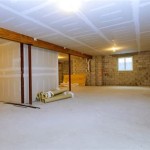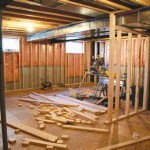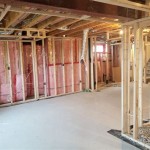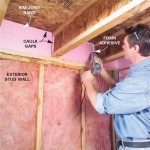Basement Wall Insulation: Faced vs. Unfaced
Basements are often overlooked when it comes to home energy efficiency, yet they significantly impact a home's overall comfort and energy consumption. One crucial element in improving basement comfort and reducing energy loss is insulation. While there are numerous insulation choices, a key decision involves choosing between faced and unfaced insulation. Understanding the differences between these options is crucial for making the right choice for your specific needs.
Faced Insulation
Faced insulation refers to insulation with a vapor barrier attached to one side. This barrier, typically made of foil or plastic, prevents water vapor from penetrating the insulation. The vapor barrier's primary function is to control moisture movement and protect the insulation from moisture damage, which can degrade its performance over time. Faced insulation is generally recommended in areas prone to high humidity or where there's a risk of moisture buildup, such as basements.
There are several advantages to using faced insulation in a basement:
- Moisture Control: The vapor barrier effectively inhibits moisture from passing through the insulation, preventing mold growth, rot, and insulation degradation. This is particularly crucial in basements, which are often susceptible to moisture issues.
- Improved Air Quality: By preventing moisture from entering the insulation, faced insulation helps maintain a dry and healthy environment in the basement, reducing the risk of allergies and respiratory problems.
- Easier Installation: The vapor barrier acts as a protective layer during installation, making it simpler to handle and install the insulation without damaging the material.
However, faced insulation also has its drawbacks:
- Potential for Moisture Trapping: In some situations, the vapor barrier can inadvertently trap moisture within the wall cavity if ventilation is inadequate. This trapped moisture can create a breeding ground for mold and mildew.
- Reduced Vapor Permeability: The vapor barrier significantly reduces the wall's ability to breathe, limiting the passage of moisture vapor, which can potentially lead to moisture buildup in certain circumstances.
Unfaced Insulation
Unfaced insulation, on the other hand, lacks a built-in vapor barrier. This type of insulation is commonly used in dry climates or areas where there's minimal risk of high humidity. Unfaced insulation is often favored in basements that have been properly sealed and have adequate ventilation to control moisture levels.
The advantages of unfaced insulation include:
- Greater Vapor Permeability: The absence of a vapor barrier allows the wall to breathe more freely, allowing moisture to escape, which can be beneficial in some situations.
- Cost-Effectiveness: Unfaced insulation is typically less expensive than faced insulation due to the absence of the vapor barrier.
However, unfaced insulation also has its disadvantages:
- Vulnerability to Moisture Damage: Without a vapor barrier, unfaced insulation is more susceptible to moisture damage from condensation or leaks. This can lead to mold growth, insulation degradation, and structural issues.
- Installation Challenges: The lack of a vapor barrier can make installing and handling unfaced insulation more difficult, potentially causing damage to the material during installation.
Key Points to Consider
The decision of whether to use faced or unfaced insulation in your basement depends on several factors, including:
1. Climate and Humidity:
In humid climates, faced insulation is generally recommended to control moisture and protect the insulation from damage. In dry climates, unfaced insulation might be suitable, particularly if the basement is properly sealed and ventilated.
2. Basement Condition:
A well-sealed and ventilated basement with a low risk of moisture intrusion might be suitable for unfaced insulation. However, basements with a history of moisture problems or poor ventilation necessitate the use of faced insulation to prevent moisture damage.
3. Insulation Type:
Different insulation types have varying moisture resistance properties. Some insulation types, like fiberglass, are prone to moisture damage and require a vapor barrier. Others, like rigid foam insulation, are more resistant to moisture and may be suitable for unfaced applications. Proper insulation selection is crucial to prevent moisture issues.
Ultimately, choosing the right insulation depends on careful consideration of your basement's specific conditions, climate, and the type of insulation being used. Consult with a qualified professional for advice on determining the most appropriate insulation type for your specific needs.
Should I Use Faced Insulation In My Basement
Unfaced Vs Kraft Faced Insulation What S The Difference Johns Manville
Unfaced Vs Kraft Faced Insulation What S The Difference Johns Manville
Should I Use Faced Insulation In My Basement
Faced Vs Unfaced Insulation
Faced Vs Unfaced Insulation Bob Vila
Healthy Basement Insulation Systems Quality Built Basements Llc
Finishing A Basement Day 4 Insulation
Faced Vs Unfaced Insulation Bob Vila
Should I Use Faced Insulation In My Basement








